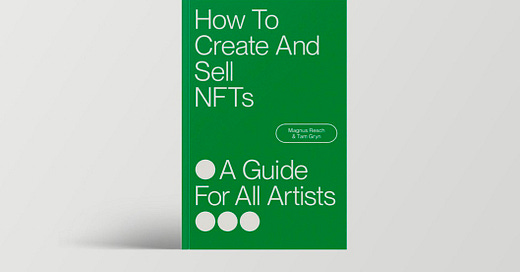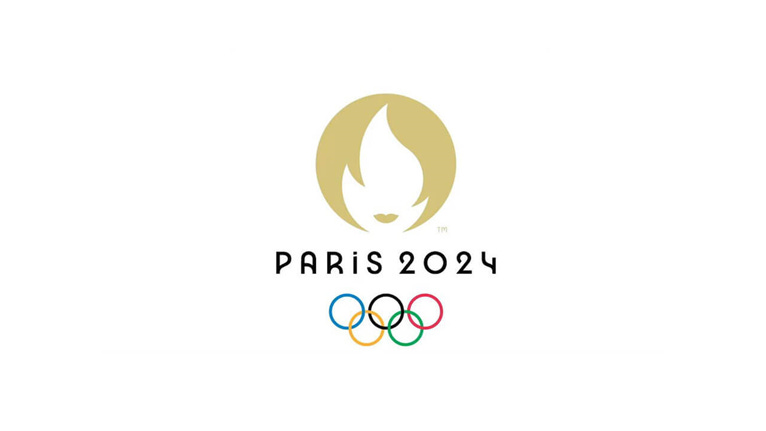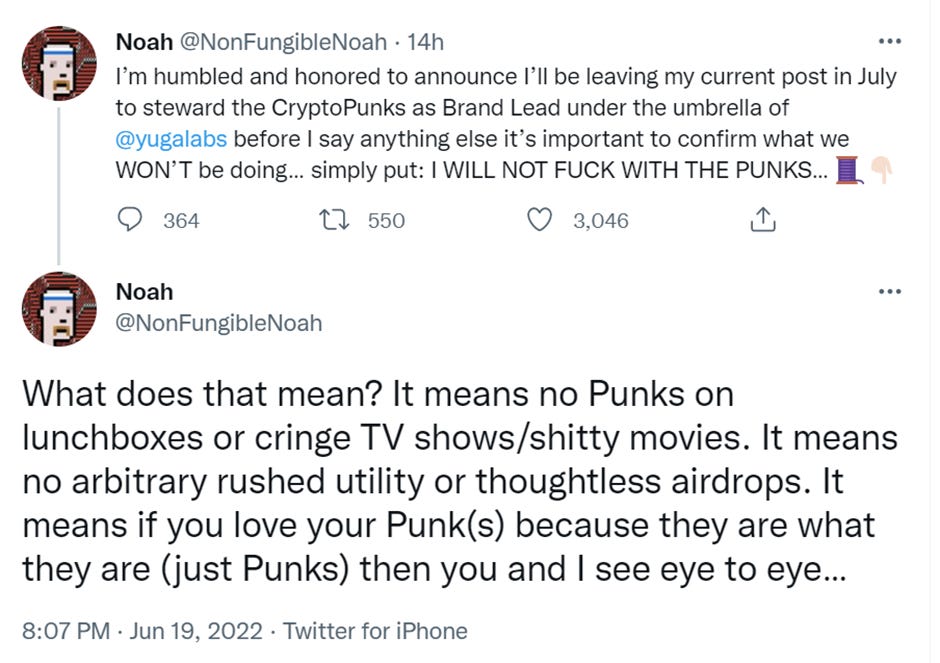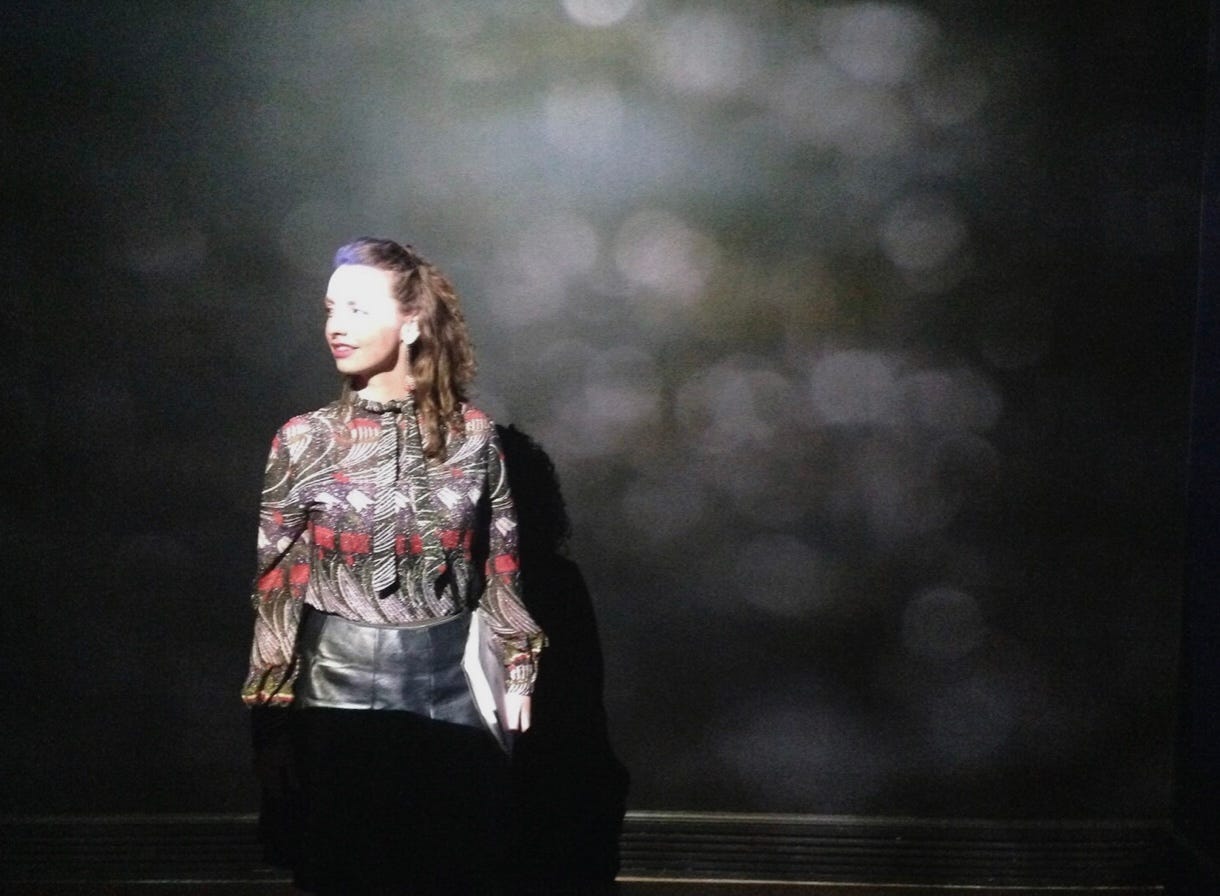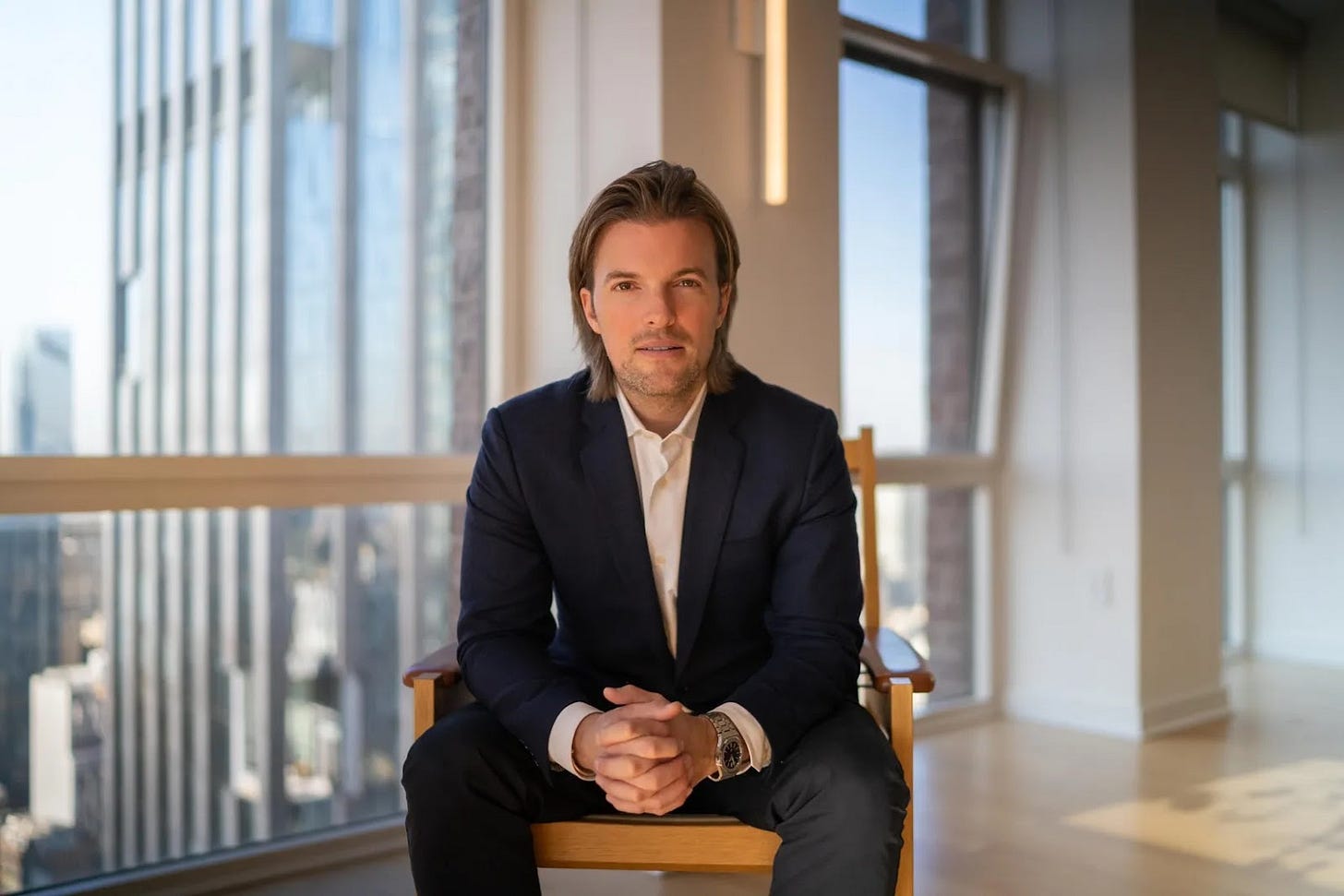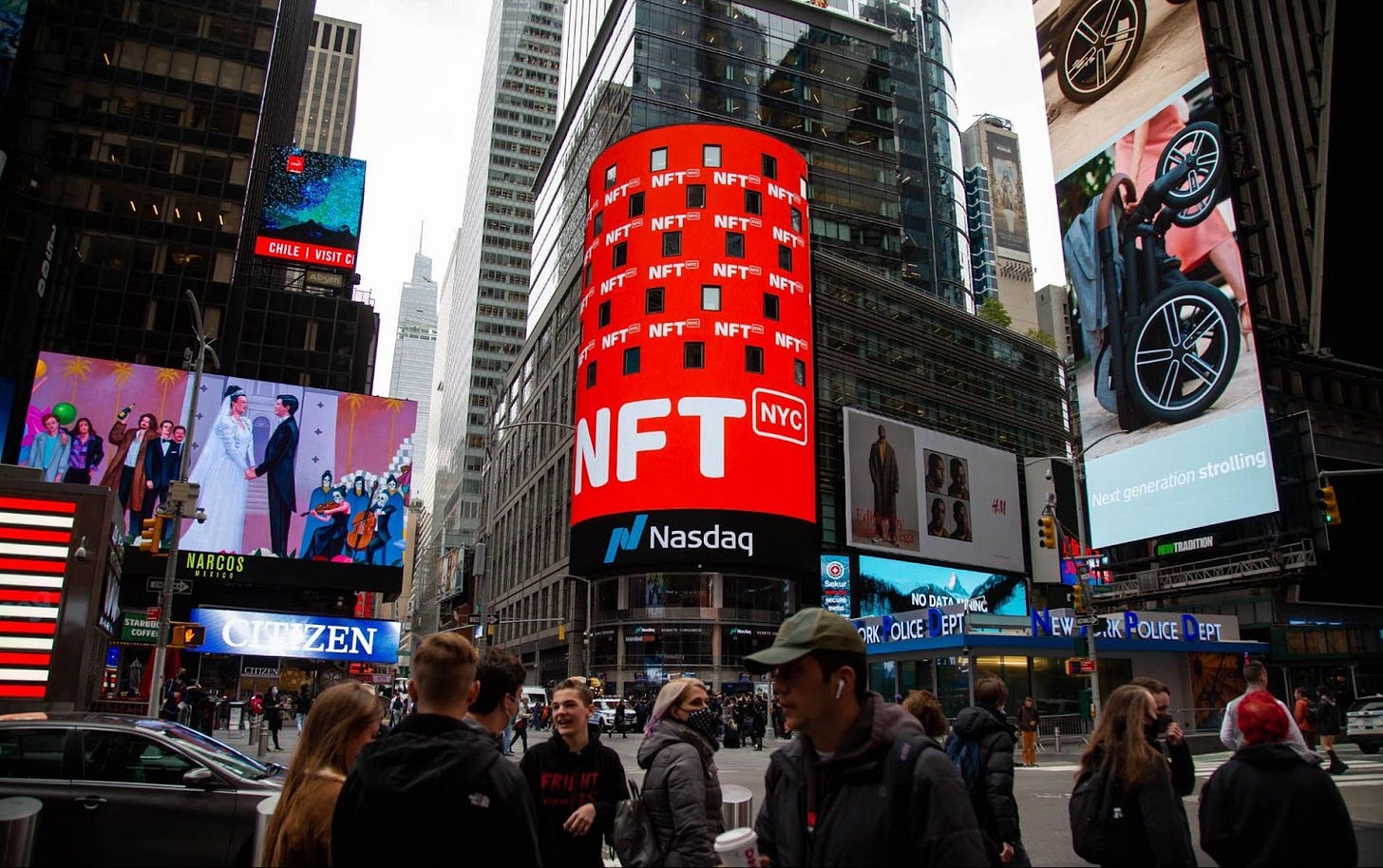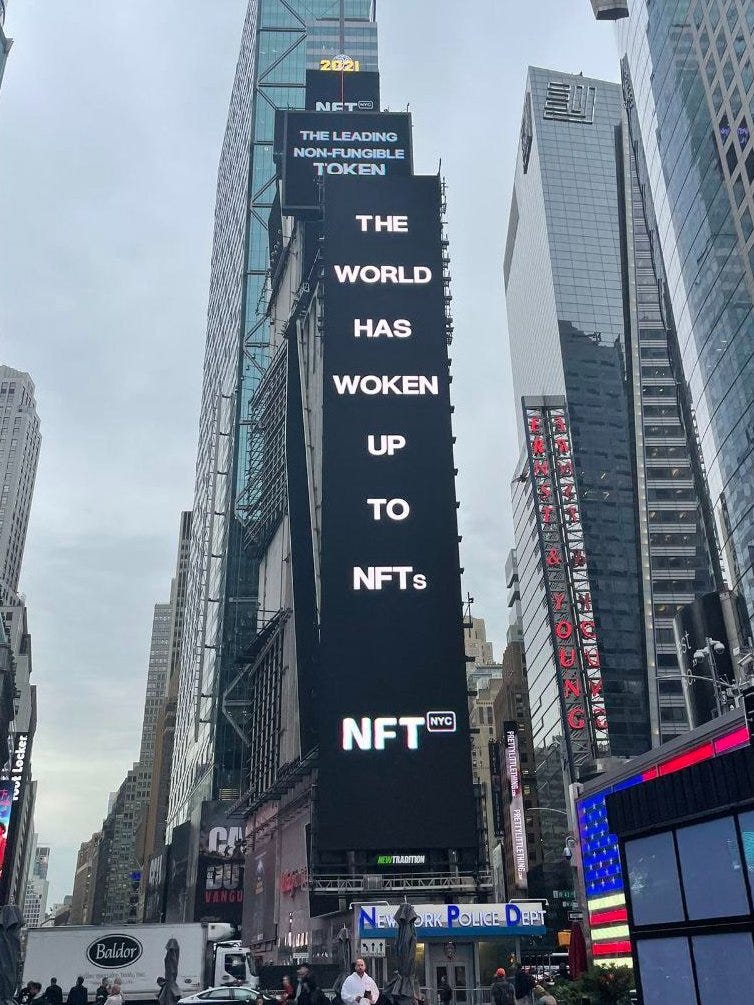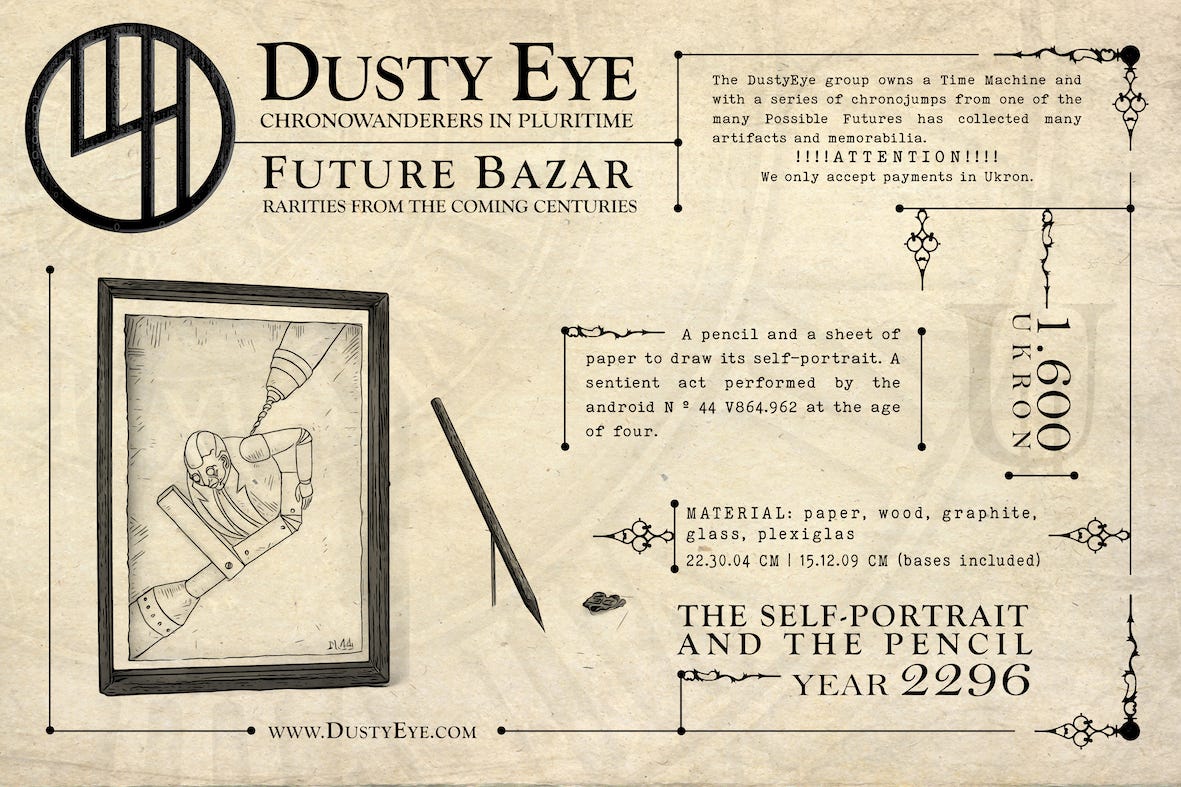“The Superbowl of NFTs” | Decentralized Arts
BanklessDAO Weekly NFT and Cryptoart Newsletter
Dear Bankless Nation,🏴
The publication of this newsletter coincides with NFT.NYC, one of the biggest NFT events on the planet that is taking place in the Big Apple in the next few days. This event has grown so large over the last four years, Coinbase is calling it “the Superbowl of NFTs.” NFT enthusiasts will have the opportunity to learn more about this technology, its uses, and what lies in store for them. This is also the perfect occasion to meet like-minded people in the dozens of events that are scheduled across the city.
During NFT.NYC we will have the pleasure of meeting Tam Gryn, who has collaborated with Decentralized Arts (DA) several times in the past. She will be joining us in this edition, along with Magnus Resch, who co-authored a book with Tam, to answer some of our questions on the evolution of the NFT world and how artists can get started in it.
Also in this edition, we begin the collaboration between DA and the Dusty Eye artistic group, which will preview the release of its new creations linked to objects found wandering in the future.
Furthermore, with blockchain technology working to shape and improve our world, we explore the use of NFT ticketing systems in sports and other events.
Finally, if you are attending NFT.NYC and want to share your experiences or stories, we will be delighted to hear from you! Please reach out to us on Twitter @DecenArts.
Welcome to Decentralized Arts.
Contributors: BanklessDAO Writers Guild (Grendel, Kouros, Kaf, nonsensetwice, Frank America)
This is the official newsletter of BanklessDAO. To unsubscribe, edit your settings.
🙏 Thanks to our sponsor!

🌐 Curated NFT News
NFT Tickets Recommended For Paris 2024 Olympics
The French Government’s Olympics envoy has recommended that the tickets for the Paris 2024 Olympics be sold as NFTs. They believe that blockchain technology is safer than traditional ticketing systems and will reduce fraudulent ticketing processes.
The attendees would get the tickets as QR codes by SMS on their devices a few days before the event and can only be used within a specified distance around the location of the event.
Michel Cadot, the French Government’s Olympics envoy, sent a 30-page report to the Prime Minister supporting blockchain technology. “This coordination should be applied to other Major International Sporting Events of major importance upstream of the cut-off of the Rugby World Cup and the 2024 Olympic Games,” the report says.
Christie’s Auctions’ NFT Specialist to Lead CryptoPunks
Noah Davis, the NFT specialist for auction house Christie’s, is leaving the position in July to lead the CryptoPunks brand.
Noah announced the news in a Twitter thread yesterday
David was involved in the $69 million USD record sale of Beeple’s “Everydays: The First 5000 Days” in March 2021.
One of the things that Yuga Labs wanted to do with the Punks when they acquired them was to turn over commercial rights to the NFT holders, but this is yet to be realized. However, Yuga Labs’ co-founder Wylie Aronov said yesterday that they didn’t want to rush it as this was very significant. Nevertheless, they will be rolling out the new terms in the next couple of weeks.
🙏 Sponsor: Rarible.com - multichain community-centric NFT marketplace 💛
How To Create And Sell NFTs
A new book by Tam Gryn and Magnus Resch
Preface by Tam Gryn, interviewed by Grendel
Artists from all parts of the world have seen the astonishing rise of NFTs in the past year. And while prices and attention flocked towards this nascent technology, many artists began to wonder how they could get involved. In a new book, written by Rally.io former Director of Fine Art Tam Gryn, and art market expert and bestselling author Magnus Resch, the two experts provide an excellent introduction for artists to Web3 and explore how artists can launch their own NFT projects.
What made you want to write this book?
Tam: When I started getting involved with NFTs in early 2020 I wanted to tell every artist about the power of this technology. I would spend 15 hours a day on one-on-one calls with artists explaining to them what NFTs are. That is when I realized there was a huge need for Web3 education in the arts and I set out to create a Crypto for Creatives course. After a year of educating artists on the benefits on Web3, I realized that there were still so many more artists. That’s when Magnus and I started talking.
Magnus: Tam and I had known each other for many years as we were both active in the art world. Tam as a curator and I as an entrepreneur and professor. We were both approached by hundreds of artists questioning us about NFTs. So we decided to write a book, answering the most important questions: What are NFTs? What is the blockchain? How can I create my first NFT project? What marketplaces should I use to sell my NFTs? What is the most effective marketing strategy? How do NFTs fit into my existing art practice?
Who do you hope this book reaches?
Tam: This is a book primarily for fine artists. There is no other book, blog, platform or content that explains the world of Web3 to artists in a language that suits artistic practices. That said, it is a great book for anyone interested or working in the arts or any creative fields such as collectors, curators, gallerists, entrepreneurs, brand founders, creative directors, producers, designers, architects, photographers, filmmakers, professionals, students and any creative leader who wants to learn the secrets of Web3, take action and disrupt the status quo.
What is your personal Web3 journey?
Magnus: My first entry point to the space was in 2018 when I got interested in generative art. I found Ahmed Elgammal’s work fascinating. We were both using data to analyze the art market. While I focused on the pricing of art works, his work looked into Generative Adversarial Network (GAN), a term that would later be summarized as AI generated art. That was also the time when I found out about Erick Calderon’s work and his project ArtBlocks. Nobody was talking about NFTs, the focus was more on the technology in the artistic creation process.
Tam: For me, my entry point came through cryptocurrencies. I was lucky enough to grow up in Venezuela with a good friend who happens to be a leader in the blockchain space since 2010. She convinced me and my husband to become humble investors in Bitcoin in those early days, and thankfully we listened. I was very interested in the Cypherpunk Manifesto, what it stood for and the solutions that blockchain technology could bring to the macro economy. In 2017, an artist in one of my shows mentioned NFTs to me for the first time. It went over my head exactly as it does to most, but it sparked my curiosity. Fast forward to 2020 when the pandemic hit and our lives became digital, I started hearing about more and more artists that started exploring NFT drops, and that is when I realized that NFTs meant perpetual royalties for artists for the first time in history! I stopped everything else I was doing right then and got involved in the space.
You are launching this book in the midst of Crypto Winter with plummeting prices for NFTs. Why now?
Magnus: Tam and I strongly believe that NFTs are here to stay. In our book, we talk extensively about the value of NFTs for artists, beyond the hype around overpriced JPEGs. We think that NFTs will have the power to change how artists can interact with their communities. There couldn’t be a better time for artists to educate themselves now because they can study which projects work well and what is only hype.
Tam: Anyone who has been in crypto for many years knows that cycles are part of the growing nature of the industry. NFTs are here to protect artists and their passive income in the long run, despite the hardships of this cycle or a potential recession. Historically, whenever new technology has emerged, there have been market downturns. The ideal move now is to use this time to study, grow, recalculate and rebuild for the future.
What do you recommend to those who don’t know where to get started on their Web3 journey?
Magnus: We asked over 150 of the world’s foremost NFT experts exactly the same questions. Their advice can be found in the book. For example from Justin Aversano, collector Deeze, art critic Jerry Saltz, Nifty Gateway co-founder Duncan Cock-Foster, Christie’s Noah Davis, Solana’s co-founder Raj Gokal and many artists, such as FEWOCiOUS, Kenny Schachter, Snowfro, Aku, Studio Drift, Jen Stark, Trevor Jones, Krista Kim, and Claire Silver.
Tam: I loved reading our experts’ advice. Some talk about how to use smart contracts, others focus on marketing aspects to sell your work, other’s talk about the creation process of NFTs but most of them talk about building community. My personal advice I give to artists is to use as many mediums as possible to express your message, research and infinite creativity. Think of NFTs and crypto as tools just like the internet, that can push your physical work forward, globally in a permissionless way.
What do you hope to see from the art world in the future?
Magnus: We are excited about the future of NFTs but we are also realistic, too. Museums of the future won’t be crammed with digital screens. Picasso’s original pieces won't become worthless, selling only if they are turned into NFTs. And not every artist will create a collection of 10,000 utility NFTs. Instead, we predict that the current convergence of digital art, crypto money and blockchain technology will bring about a profound structural shift in the art ecosystem. We will see changes in traditional purchasing behavior. Collectors won't buy if a work is not registered on the blockchain; creators will exert more control over their work; artists will earn royalties from resales; and the art market will become more regulated, for the better.
Tam: I hope to see an artworld that can seamlessly bridge physical and digital experiences that transcend both the experience economy of the 2018s and the digital renaissance post-covid. I hope to work towards a Web3 that uses curation for relevance and artistic narrative, but stays decentralized and provides access to all artists without gatekeeping. NFTs should be used to protect all of artists’ output, starting from the creative process, the behind the scenes, and every step of the way until the final artwork, both digital and physical.
Do you also see risks?
Tam: Yes, of course, we do. New threats and challenges associated with engaging with the NFT market will arise, such as mental health issues. Web2 brought a lot of responsibility for the artist in terms of documenting and marketing all of their world and becoming their own marketing engines on social media. Web3 brings about even more responsibility for artists, from sustaining audiences to building and engaging with communities, connecting to collectors directly, building utility, roadmaps, and sustaining value for perpetuity; it's no small task. I hope artists can remember to create teams around themselves in order to share roles and leverage digital assets to reward others for their support.
Magnus: We talk a lot about opportunities and risks in the book. One challenge I see for artists is that with increased independence comes an increase of responsibilities. Whereas artists used to be able to rely on the support of a gallery, now they are required to deal directly with collectors, the media and incoming requests. For example, they need to respond when collectors have inquiries, are unsatisfied, or want to share their feedback. Art evokes emotion; therefore, artists can expect to be confronted with emotional feedback from their customers. And they will need to reply to requests by the press, curators, museums who want to show their work, and more. Some artists today are doing several of these tasks without gallery support. Most artists will, however, hire organizational support to manage their studios, replicating some of the roles you find in traditional galleries today to give them enough space to create art.
What do you expect from NFT.NYC?
Tam: I hope to see optimism regarding the current market situation, hopefully combined with hedging tools for artists to navigate the present with ease. I hope to hear about the art and cryptoart bridge getting together; further innovation in terms of interoperable metaverses; digiphysical twins; and more cultural abundance and diverse players, including more international actors. In general, I am looking forward to more tangible examples of success stories and less theoretical visions about the space. I'm speaking about the role of a Curator as being similar to the role of an Investor in this market.
“How To Create And Sell NFTs - A Guide For All Artists”, the new book by Tam Gryn and Magnus Resch can be ordered on Amazon beginning June 29, 2022.
NFT.NYC
The best NFT party in the world!
By Kaf
Traditional thinking regarding products suggests that physical goods are rare and digital goods are expendable. This is no longer true. The world is changing at dizzying speeds, and with it, our understanding of physical and digital products. In the midst of this, the world's largest NFT event will take place: NFT.NYC.
Running from June 20th to the 23rd, the 2022 NFT.NYC event will be a global melting pot for everyone in the NFT world, culminating in 1500 panel speakers, talks, garden chats, and hundreds of pop-up events. Attendance figures are expected to soar from 5,600 last year to more than 15,000 this year. This year's theme is "The Diversity of NFTs," with official NFT.NYC events held in seven locations:
Radio City Music Hall
New York Marriott Marquis
Palladium Times Square
The Edison Ballroom
Edison's rooftop
City Hall
Margaritaville Resort Times Square
During the event, celebrities and some of the biggest leaders in crypto will be discussing NFTs and the paradigm shift they bring. They will talk about how NFTs can improve industries such as sports, art, film, gaming, and more. In the following chart, you can see the different categories that will take place during the event.
As can be seen in the graph above, art represents a huge niche within NFTs, and even though trading volume is currently down, everything seems to indicate that in the future, digital art will revolve around NFTs.





As you can see in pranksy’s tweet, one of the projects nominated in different categories as “Best onboarding experience” or “The diversity” award is Best Friend Forever (BFF), which we talked about in this article. Another of the projects to watch is Krause House, who is going to make a lot of noise with their physical NFT basketball court. Furthermore, to give opportunities to emerging artists who want to exhibit their art in Times Square, NFT.NYC created a contest and selected 221 artists to attend and display their work. If you want to know what some of the best projects of the past year have been, the winners of the 2nd annual NFT awards will be announced at the event. It would be impossible to talk about all the great projects and people that will participate, so we recommend that you keep an eye on NFT.NYC Twitter to find out what is happening.
We are still at an early stage with NFTs, and this technology still has certain drawbacks, but there is no doubt that from four years ago until now, the growth has been incredible. And while we are all worried about the current state of the market, the success of events like this provide evidence that Web3 is here to stay. Events like NFT.NYC open the eyes of those who still do not trust this technology and provide a great opportunity to those who want to learn and grow in this ecosystem.
Future Bazar
Rarities from the Coming Centuries
By Dusty Eye
🙏 Thanks to Our Sponsor!
Rarible
Rarible.com is a top multichain NFT marketplace underpinned by Rarible Protocol, an open source, community-governed NFT API that simplifies building community marketplaces and any other NFT projects and integrations.
💸 Connect up to 20 Ethereum, Polygon, Tezos, Flow wallets to your profile on Rarible.com
🙋♀️ Place a floor bid on BAYC, BossBeauties, mfers, and other NFT collections
📲 Monitor and manage your NFT portfolio in Rarible mobile app (iOS, Android)
🔗 Start building on Rarible Protocol: no API key, no rate limit, your own node option
Decentralized Arts is written and produced by a small team of contributors who are passionate about art, both visual and written, and its growing place in crypto and NFTs. With each edition, we aim to bring you not only the most current and relevant news in the NFT space, but also explorations in what it means for our culture and societies for this market to continue to grow and expand. When everyone is an owner of art, we all gain a deeper appreciation for it.
With great appreciation for you, we thank you for reading and subscribing to Decentralized Arts.
Cordially,
Grendel, Kouros, Kaf, nonsensetwice, and Frank America

